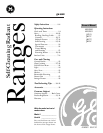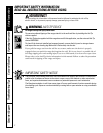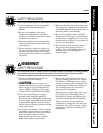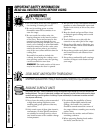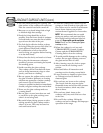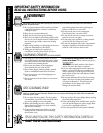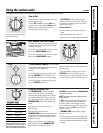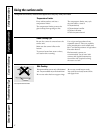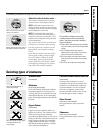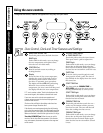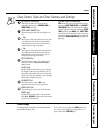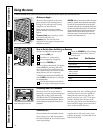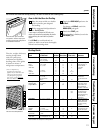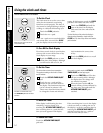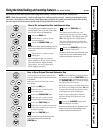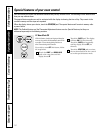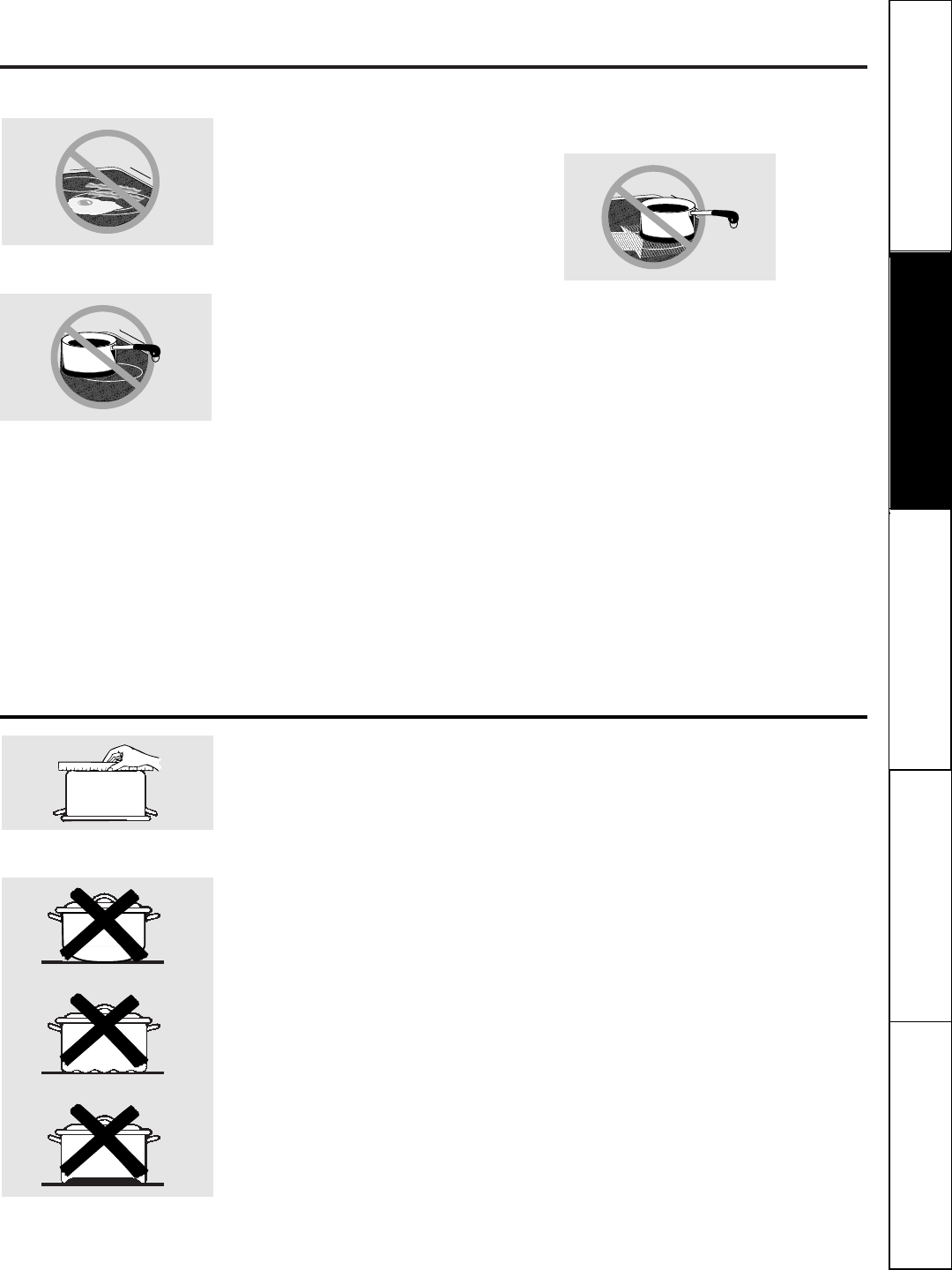
ge.com
The following information will help you choose cookware which will give good performance on glass cooktops.
Never cook directly on the glass.
Always use cookware.
About the radiant surface units…
The radiant cooktop features heating
units beneath a smooth glass surface.
NOTE: A slight odor is normal when a new
cooktop is used for the first time. It is caused by
the heating of new parts and insulating materials
and will disappear in a short time.
NOTE: On models with light-colored glass
cooktops, it is normal for the cooking zones to
change color when hot or cooling down. This is
temporary and will disappear as the glass cools
to room temperature.
The surface unit will cycle on and off to
maintain your selected control setting.
It is safe to place hot cookware on the
glass surface even when the cooktop
is cool.
Even after the surface units are turned
off, the glass cooktop retains enough
heat to continue cooking. To avoid
overcooking, remove pans from the
surface units when the food is cooked.
Avoid placing anything on the surface
unit until it has cooled completely.
Do not slide cookware across the
cooktop because it can scratch the
glass—the glass is scratch-resistant,
not scratchproof.
■ Water stains (mineral deposits) are removable
using the cleaning cream or full-strength white
vinegar.
■ Use of window cleaner may leave an
iridescent film on the cooktop. The cleaning
cream will remove this discoloration.
■ Don’t store heavy items above the cooktop.
If they drop onto the cooktop, they can cause
damage.
■ Do not use the surface as a cutting board.
DRAGGING
SURFACE
COOKING
OFF CENTER
Always place the pan in the center of
the surface unit you are cooking on.
Safety Instructions
Operating Instructions
Safety Instructions
Operating Instructions Care and Cleaning
Troubleshooting Tips Consumer Support
9
Selecting types of cookware.
Stainless Steel:
recommended
Aluminum:
heavy weight recommended
Good conductivity. Aluminum residues
sometimes appear as scratches on the
cooktop, but can be removed if cleaned
immediately. Because of its low melting
point, thin weight aluminum should not
be used.
Copper Bottom:
recommended
Copper may leave residues which can
appear as scratches. The residues can be
removed, as long as the cooktop is
cleaned immediately. However, do not let
these pots boil dry. Overheated metal can
bond to glass cooktops. An overheated
copper bottom pot will leave a residue
that will permanently stain the cooktop
if not removed immediately.
Porcelain Enamel-Covered Cast Iron:
recommended
As long as the cookware is covered
completely with porcelain enamel, this
cookware is recommended. Caution is
recommended for cast iron cookware
that is not completely covered with
smooth porcelain enamel, since it may
scratch the glass ceramic cooktop.
Glass-Ceramic:
usable, but not recommended
Poor performance. May scratch the
surface.
Stoneware:
usable, but not recommended
Poor performance. May scratch the
surface.
Check pans for flat bottoms by
using a straight edge.
Pans with rounded, curved, ridged
or warped bottoms are not
recommended.



